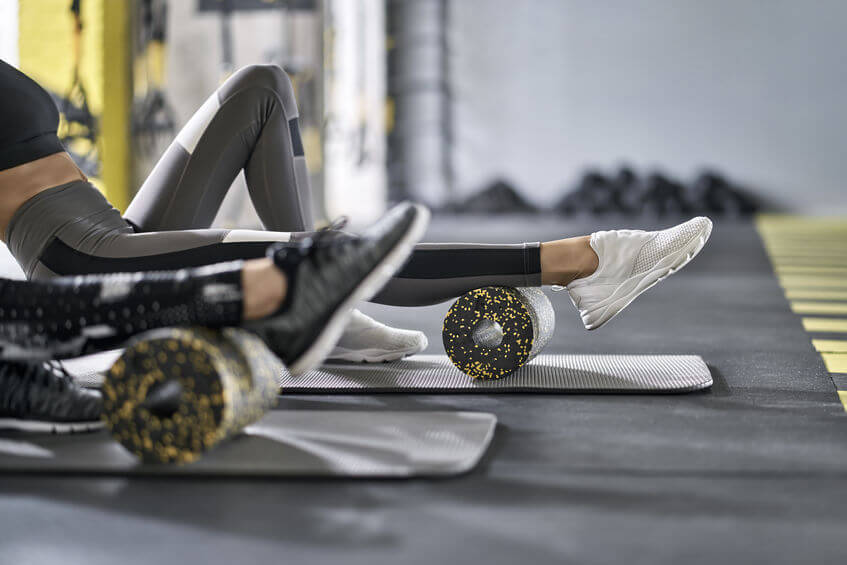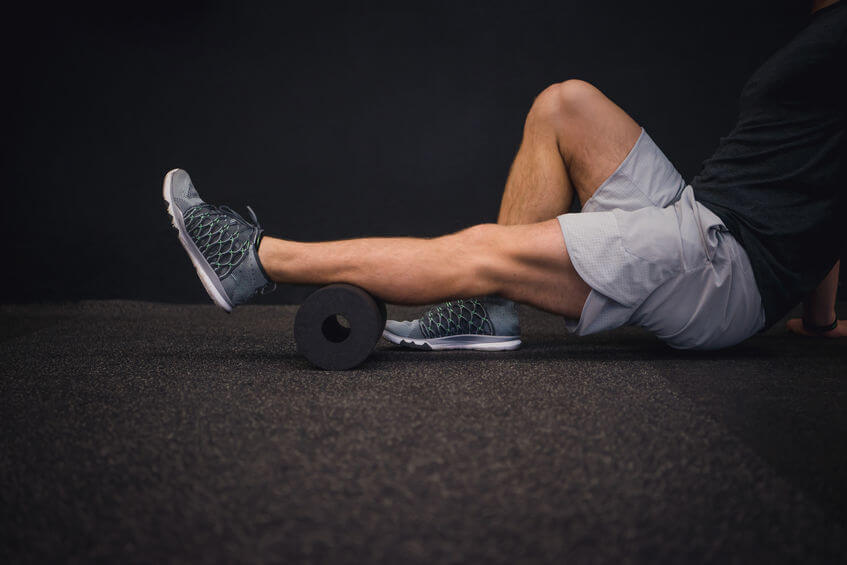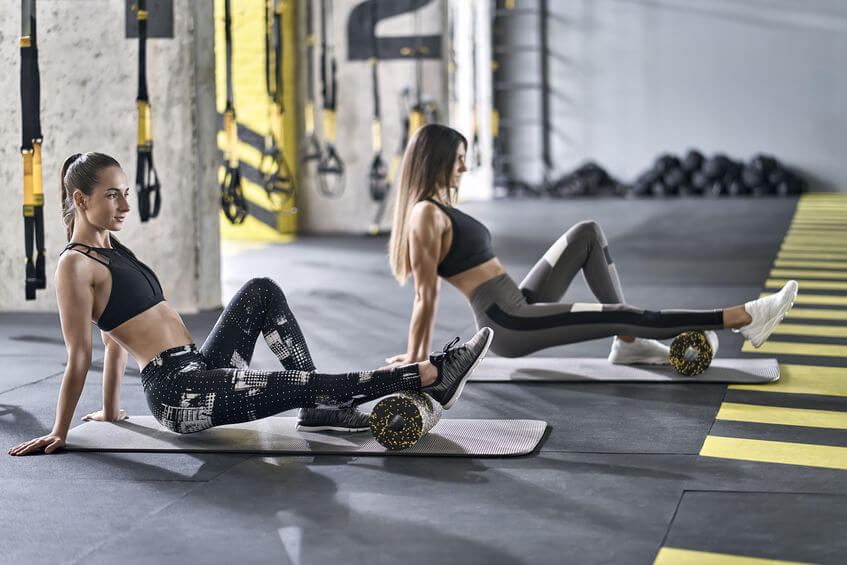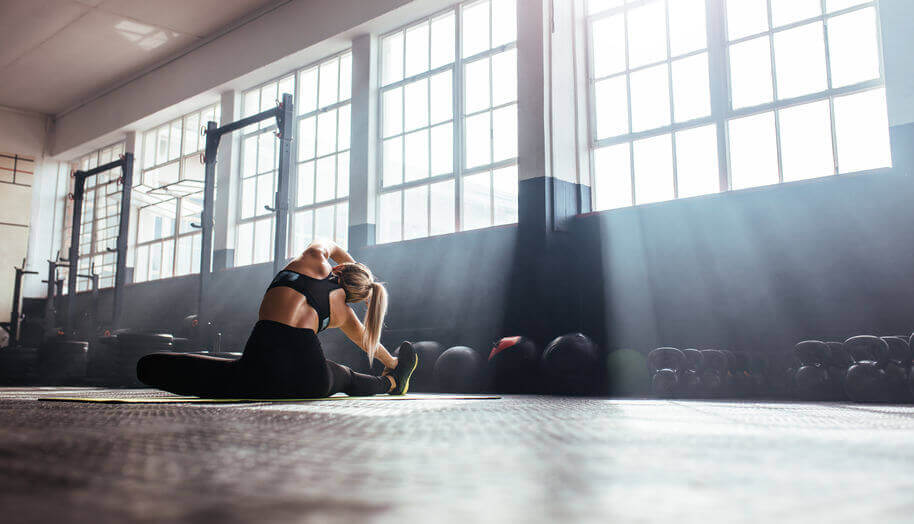Benefits of Foam Rolling – The Good, The Bad & The Sore
Working out can be tough on the body. The pain is real, and the next day aches that come after an intense workout are inevitable.
While they let you know you’ve put a solid shift in, they can also be like a nasty thorn in the side.
Let’s be honest, sometimes the aches, and knots of the body can feel like itches that you’d love to scratch. That’s where the foam roller comes in.
In this article, I’m going to try my best to analyze foam rolling and its pros and cons.
Contents
What is a Foam Roller?
While some tend to think of the foam roller as a sick and twisted torture device meant to inflict further post-workout pain on the body, it’s actually an ingenious invention that can take your gains to the next level.
Something which can simultaneously be your best friend and worst enemy, the foam roller ultimately helps ease the pain and restore balance in the body.
The benefits of foam rolling are numerous, and whether you work out recreationally, compete professionally, or sit somewhere between the two, you can certainly up your recovery and build further flexibility with the deceptively innocent-sounding foam roller.
After all, there’s no gain without pain, right?
Some of you probably haven’t even heard of a foam roller before, so before you go and look it up online, here’s the gist of it.
A foam roller is a simple, cylindrical tube made up of tightly compressed foam. Resembling a very tightly rolled up, slightly bigger yoga mat, the foam roller comes in a few varieties, which each have their own benefits.
Types of Foam Rollers
Soft (low density)
The first type of foam roller is the soft, or low-density kind. This one is the lightweight option which is best used during exercise classes, yoga, or for when your muscles are extra sore and tender.
You can see this as the most beginner-friendly option. Starting out with a low-density foam roller is a good idea just to get to grips with it and see if it’s for you.
Medium-density
The middle-of-the-road option, medium-density foam rollers are the ones you can graduate to if you feel ready to move on from the soft foam rollers.
A well-balanced bit of kit, this one will hold up to more pressure, and won’t cave in completely when you rest on it.
Firm (high density)
Getting to the business end of things, firm, or high density, foam rollers are unforgiving. Perfect for myofascial release techniques and a thorough going-over of the body, this one will leave you feeling great once you use it for a while.
Firm foam rollers are the best bet for athletes needing to recover as fast as possible, or gluttons for punishment who enjoy the idea of putting their body through even more pain after a hard workout.
Bumpy
This is the most feared type of foam roller. The one that can reduce a grown man to tears in a matter of minutes.
A tube with large bumps covering its surface, the bumpy foam roller is for those persistent knots in the body that need releasing.
Be warned, using the bumpy foam roller for the first time might cause childlike screams and a lot of discomfort.
Is Foam Rolling Actually Good for You?
In theory, the foam roller is a great concept: roll out painful knots in the body using myofascial release, and go through a bit of discomfort for long-term comfort.
However, and this is the killer question, is foam rolling actually good for you, or is it causing more harm than good?
Getting straight to the point, we’re going to first assess the arguments for how foam rolling can be beneficial for you and your workout goals, and then take a look at the opposing arguments which dispute the effectiveness of the foam roller.
That way, you can make an informed decision as to whether you want to invest in a foam roller, or continue to use it should you already have one.
The Benefits of Foam Rolling
Improved Range of Motion
Improved range of motion is perhaps an overlooked benefit of using a foam roller, but is incredibly important for getting better results in the gym, and getting the most out of your body.
To give a brief insight into the science behind this perceived benefit, it all comes down to the myofascial release which can come about through the use of the foam roller.
Myofascial release refers to the process of motion being restored to muscles through the application of pressure to the body. Without getting too technical, the gist of it is that fascia in the body will extend and relax if pressured gently over a period of time.
Now, while this sounds amazing, you’ll have to take it all with a pinch of salt, purely because of the lack of in-depth scientific research to back it up. That’s not to say it doesn’t work since many people swear by it, and this research conducted in 2015 adds credence to the idea.
Quicker Recovery Time
Next up, we have the benefit that most people seek to gain from using the foam roller: quicker recovery time.
If there’s one thing most gym-goers want, it’s to recover as quickly as possible to get back at it and reduce time spent not working out.
Say you worked your calves especially hard, and they are still feeling especially sore after a day or so. Applying gentle pressure to them with the foam roller can bring blood to them, and help them recover quicker.
In addition, one of the benefits of the foam roller is the elimination of that annoying waste product lactic acid. The one that’s responsible for the aches and pains after a workout.
By using the foam roller after a workout, you will be able to again draw blood to parts of the body that need it, and speed up the elimination of lactic acid.
Better Blood Flow
Following on from the last benefit, let’s talk about better blood flow. Of course, if foam rolling can draw blood to different areas of the body, surely it can improve general blood flow around the body, right?
Well, in a word, yes. Due to our good friend myofascial release, the current blood in the muscles can be replaced with fresh blood and improve the general circulation.
This increased blood flow in the muscles and connective tissues can result in greater flexibility and a better range of motion, what’s not to love about that?
The Drawbacks of Foam Rolling
So now that we’ve taken a look at just a few of the many benefits associated with foam rolling, it’s only fair that we evaluate some of the potential drawbacks, and see if using a foam roller can even be harmful to your body.
Masking Injury
Masking injury is definitely something to consider when you’re using a foam roller.
Say you’ve developed an issue somewhere in the body that you’re not yet aware of – due to incorrect form working out or going too hard in the gym for example – and you continue to use a foam roller, you could potentially risk further injury as you mistake the pain from the injury for the pain associated with using the foam roller.
While this might seem an unlikely scenario, it’s definitely possible and is worth thinking about the next time you reach for the foam roller when you feel pain.
At the end of the day though, so long as you’re tuned in to your body, you should be able to realize when something is up and then you can simply lay off the foam roller for a couple of days.
Placebo Effect
With some things in life, the benefit you get from them are purely placebo, meaning they’re perceived in your mind.
While I’m not saying that this is the case for foam rolling, there is an argument that the effect of myofascial release isn’t as great as some people would have you believe.
This article by Time magazine quotes a professor of human kinetics, David Behm, saying ‘you would need much higher forces than a human would typically be able to exert on themselves’ when asked about how much force is required to effect fascia.
Yet there is plenty of research out there that foam rolling, however it is done, leads to a whole host of positive results for the body.
So while we may not fully understand the role of the foam roller and what exactly it does for us, the general consensus is that the benefits are real, and it can actually help us.
If you don’t own one yet, what are you waiting for? You can check out our article on the best foam rollers now and pick the one that best suits your needs.
When is the Best Time for Foam Rolling?
Now that we’ve addressed the potential benefits you can glean from using a foam roller, let’s talk about the best time to use it for the best results.
Essentially this question boils down to whether you should use the foam roller pre or post-workout.
Although it may sound like a cop-out, both using a foam roller before a workout and after one can be advantageous. As anecdotal evidence and research would have you believe, there are benefits for using a foam roller whatever the time, so there’s no real consensus on the ‘best’ time to use one.
With that said, let’s take a look at what you can gain from using a foam roller pre-workout vs post-workout.
Pre-workout
The main advantage to using the foam roller during your pre-workout is it will help warm the muscles up and ensure it’s safe for you to engage the muscles.
Just like you need to wear a new pair of workout shoes before your feet get accustomed to them, your body needs a warm-up period before you engage in any strenuous activity.
By rolling over some of the bigger muscles in the body before diving into the day’s workout, you can reduce the risk of injury.
The main muscles you should look to roll out are the lats, calves, quads, glutes, and thoracic spine. 30 seconds for each muscle group should suffice and can give you an extra edge for your workout.
Post-workout
Most people use a foam roller after they’ve completed their workout. This is because like we said earlier, the foam roller can aid with muscle recovery, which is hugely important if you exercise regularly.
As we established earlier in the article, using the foam roller post-workout will promote increased blood flow in the body, and ensure fresh blood gets to the muscles which need it most.
Muscles break down before they develop, and the foam roller can speed up this recovery process, which might bring you quicker and better results.
The other benefit of using the foam roller post-workout is that you’ll get great satisfaction from rolling out some of the trigger points and knots in your body, which makes it an enjoyable process in itself, and a fun thing to incorporate into your post-workout routine.
What Else Can Foam Rolling Help With?
Aside from increased blood flow, and better recovery, what else can foam rolling help us with?
Mobility
Mobility is huge for athletes and anyone who practices sport regularly.
If you love running, check out our article on the best foam rollers for runners.
Mobility is all about getting your body primed for a workout. More and more these days it’s important to sharpen your body, given that so many of us spend most of our days in a sedentary position which isn’t good for us.
The benefits of foam rollers for runners and athletes are mainly to do with being ready to go as quickly as possible.
Foam rolling can bridge the gap between being sedentary and sharp, helping you transition into movement as seamlessly as possible.
Specifically, using a foam roller can help with the thoracic spine, adductor, lats, and heel cords.
Check out this detailed article from Spartan Life for more information on the foam roller exercises to increase mobility in these 4 areas of the body.
Weight loss
The other perhaps surprising thing a foam roller can help you with is getting lean, or at least appearing to.
I’m not about to sit here and tell you that rolling over a foam tube will directly lead to weight loss because unless you do it non-stop, it won’t.
However, some people suggest that using a foam roller can reduce cellulite and as a result smoothen out the fat in the body.
Using the foam roller has been likened to having a detox; flushing out the toxins from the body and reducing inflammation.
This YouTube video from SHAPE magazine shows some exercises you can do to reduce the appearance of cellulite in the body and burn fat.
Summary
In short, foam rollers are highly versatile and undeniably effective when it comes to recovery and increased blood flow in the body.
If you’ve enjoyed this article, make sure you subscribe to our newsletter to receive updates on the best gym equipment and fitness news.




